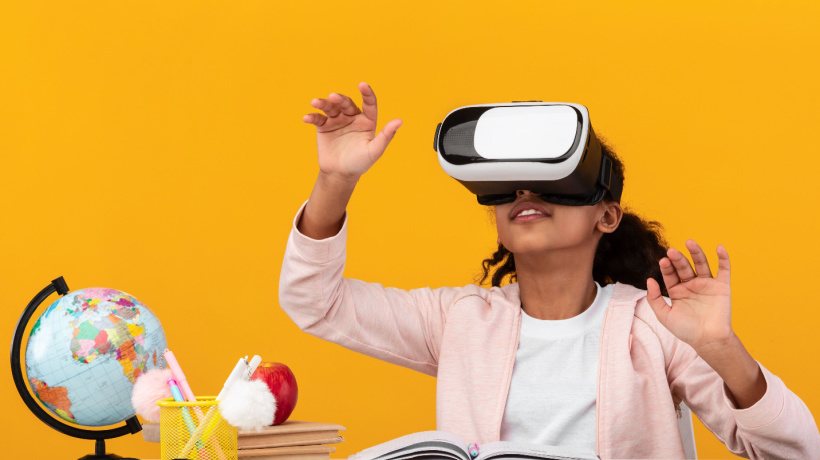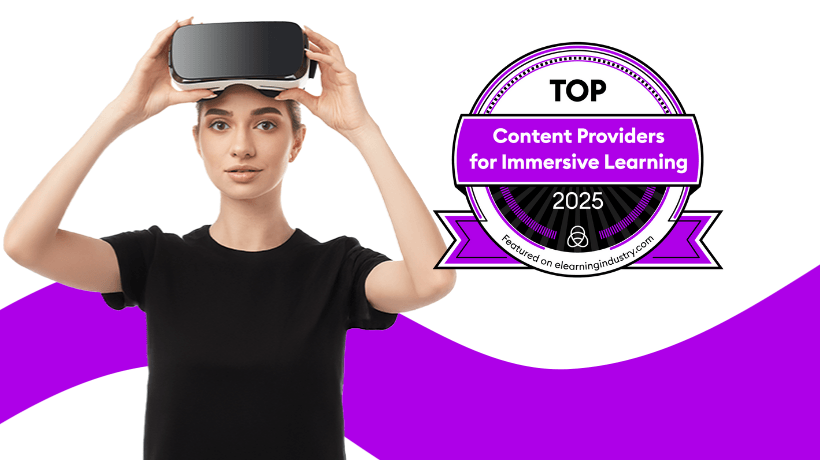What Is Immersive Learning?
Immersive learning is only getting bigger and better, but why aren’t we utilizing such a feasible and practical tool? What is immersive learning and why should you be using it?
Unlike your usual training sessions at work, immersive learning uses simulated or artificial environments to enable learners to become immersed in realistic scenarios. Essentially, immersive learning brings real scenarios to the learner, in a safe practice environment.
Learning in this way allows learners to make mistakes and decisions before applying the right behaviors to real life, whilst on the job. Additionally, it means the learner is in control of their learning, which improves motivation, engagement and knowledge retention.
A great benefit of immersive learning is being able to tailor the content exactly to your organization’s practices, values, and beliefs—no training is the same. However, the reason most organizations benefit from immersive learning is purely down to how practical and feasible it can be.
Immersive Learning Environments
Immersive learning environments refer to the form of immersive learning you use, physical or virtual. This can range from role-play to simulations to virtual environments. All of these environments allow learners to fail in an environment where mistakes can be made.
“Failure is the key to success; each mistake teaches us something.” – Morihei Ueshiba
It’s important to give learners this opportunity, but why? It means they are less likely to make mistakes on the job—bonus points for any learning manager. And lastly, it ensures learners understand the impact of failing, resulting in desired changes in behaviors, values, and protocols.
Immersive Storytelling
Storytelling has become a successful method in many Learning and Development strategies, and it’s just as important for immersive learning. Immersive learning isn’t just about putting your learner into any scenario to teach them a lesson. It’s about bringing them into a story, making them a character and taking them on a journey.
Learners can be the characters of employees or clients and customers. Experiencing both of these will highlight the effects one another's actions have—a great way to understand desired behaviors.
Another benefit of storytelling is that it connects and engages with people's emotions. Emotions enable people to remember what not to do and what to do in certain situations; allowing a greater understanding of behaviors.
Real Experiences
As we know, the environment is an important aspect of immersive learning. The experience is equally as important. The more realistic the scenario, the more likely learners are to repeat successful behaviors.
Just like storytelling, the experience you provide the learner with will immerse them further into their journey. Although it may sound obvious, it’s important to give learners a scenario they are most likely to experience on the job. As a learning manager, you must think about the good and the bad, but not go to extremes just because it creates more exciting content—be realistic with your learners.
Lifesaver is a perfect example of immersive learning with real experiences; one that many of us may have come across. Using real film, Lifesaver shows how emergency situations unfold in real life. As the learner, you must make important decisions to save a life. The fantastic tool can be used on a computer, phone or tablet and teaches CPR to double the chances of survival.
Realistic Challenges
On the topic of being realistic, you must also give your learners realistic challenges. Learners must be challenged to help them to understand difficult situations they may come across and the best solution.
Challenges make learners more engaged, they become intrigued about what’s going to happen next. Additionally, they want to find a solution and have the feeling of satisfaction—a great motivation to want to learn and do more.
Once more, it’s important to give realistic challenges, you must set apart the extremes to the more likely challenges.
Put The Learner In Control
By strategically planning the learning content, you can put the learner in control, laying out their own path to the end goal. Branching scenarios allow you to do just that. By presenting challenges, you can provide a range of decisions for the learner to choose from. The scenario will unfold dependent on their answer, whether that be the right or the wrong one.
Giving the learner these opportunities will help to embed the correct behavior choices. Scenarios unfolding will give the learners a clear view of their actions and the effects they have on others; a real learner-centered approach to training.
We are also more likely to take action on something from our own choices, rather than somebody telling us what to do. Branching scenarios allow learners to feel like they’re making the choices and teaching themselves—another great way to uplift learners and increase motivation.
Why Immersive Learning?
Immersive learning delivers high impact training, which is practical and feasible for both learners and learning managers. Without the need of a trainer and a classroom, immersive learning cuts costs and that means training can be done at the learners' comfort.
Immersive learning, as we know, is a super engaging method of learning. It pulls in learners, takes them on a journey and allows them to make impactful decisions to embed behaviors. The challenges and stories that immersive learning presents to learners, motivate them to be successful on the job.
It’s clear to see the reasons why immersive learning can transform your training. It could potentially be the most effective tool in your L&D box, finally, making learning an exciting journey to be on.










